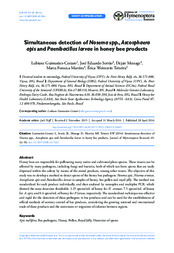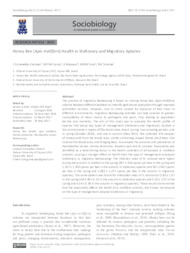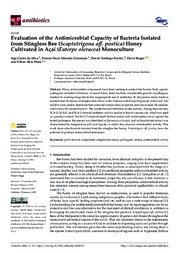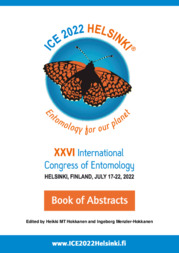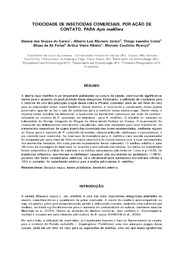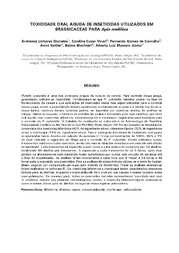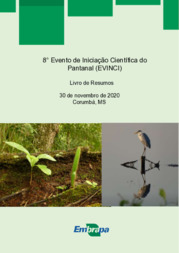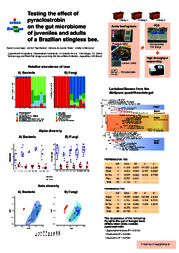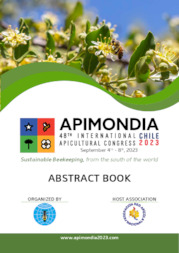Search Publications
Filter by:
| Author(s): GUIMARÃES-CESTARO, L.; SERRÃO, J. E.; MESSAGE, D.; MARTINS, M. F.; TEIXEIRA, É. W. Abstract Honey bees are responsible for pollinating many native and cultivated plant species. These insects can be affected by many pathogens, including fungi and bacteria, both of which can form spor... ... |
| Author(s): CESTARO, L. G.; ALVES, M. L. T. M. F; MESSAGE, D.; SILVA, M. V. G. B.; TEIXEIRA, E. W. The practice of migratory beekeeping is based on moving honey bee (Apis mellifera) colonies between different locations to intensify agricultural production through improved pollination services. Howe... ... |
| Author(s): SILVA, I. C. da; CONCEIÇÃO, E. O. A.; PEREIRA, D. S.; ROGEZ, H.; MUTO, N. A. Many antimicrobial compounds have been seeking to protect the human body against pathogenic microbial infections. In recent times, there has been considerable growth of pathogens resistant to existing... ... |
| Author(s): SANTOS, I. A. dos; SILVA, C. I.; SCHLINDWEIN, C.; KRUG, C.; CORDEIRO, G. D.; OLIVEIRA, R.; MATEUS, S.; DÖTTERL, S. Most bees are active during the day. However, approximately 1% of the bee species are nocturnal and forage in search for flowers during the low light intensities of the night, between sunset and sunri... ... |
| Author(s): CARMO, D. das G. do; MARSARO JÚNIOR, A. L.; COSTA, T. L.; FARIAS, E. de SÁ; RIBEIRO, A. V.; PICANÇO, M. C.
|
| Author(s): DORNELES, A. L.; VICARI, C. C.; CARVALHO, F. G. de; SATTLER, A.; BLOCHTEIN, B.; MARSARO JÚNIOR, A. L.
|
| Author(s): QUEIROZ, A. C. M. de; VENTURIERI, G. C.; VENTURIERI, G. R.; OLIVEIRA JUNIOR, M. C. M. de
|
| Author(s): SALLES, C. A. O.; LEMES, S. F.; REIS, V. D. A. dos
|
| Author(s): HAAG, K. L.; RAMOS, J. D.; PRADO, S. de S.; MENEZES, C.
|
| Author(s): MAUÉS, M. M.; CAMPBELL, A. J.; SILVA E SILVA, F. D. da; LEÃO, K. L.; CARVALHEIRO, L. G.; MOREIRA, E. F.; MERTENS, F.; KONRAD, M. L.; MENEZES, C. Agricultural expansion is a major driver of habitat loss, which triggers biodiversitydecline, including wild pollinators, and affects crop production. 76% of world crops are dependenton biotic pollina... ... |
Observation
Some of Embrapa's publications are published as ePub files. To read them, use or download one of the following free software options to your computer or mobile device. Android: Google Play Books; IOS: iBooks; Windows and Linux: Calibre.
Access other publications
Access the Agricultural Research Database (BDPA) to consult Embrapa's full library collection and records.
Visit Embrapa Bookstore to purchase books and other publications sold by Embrapa.

